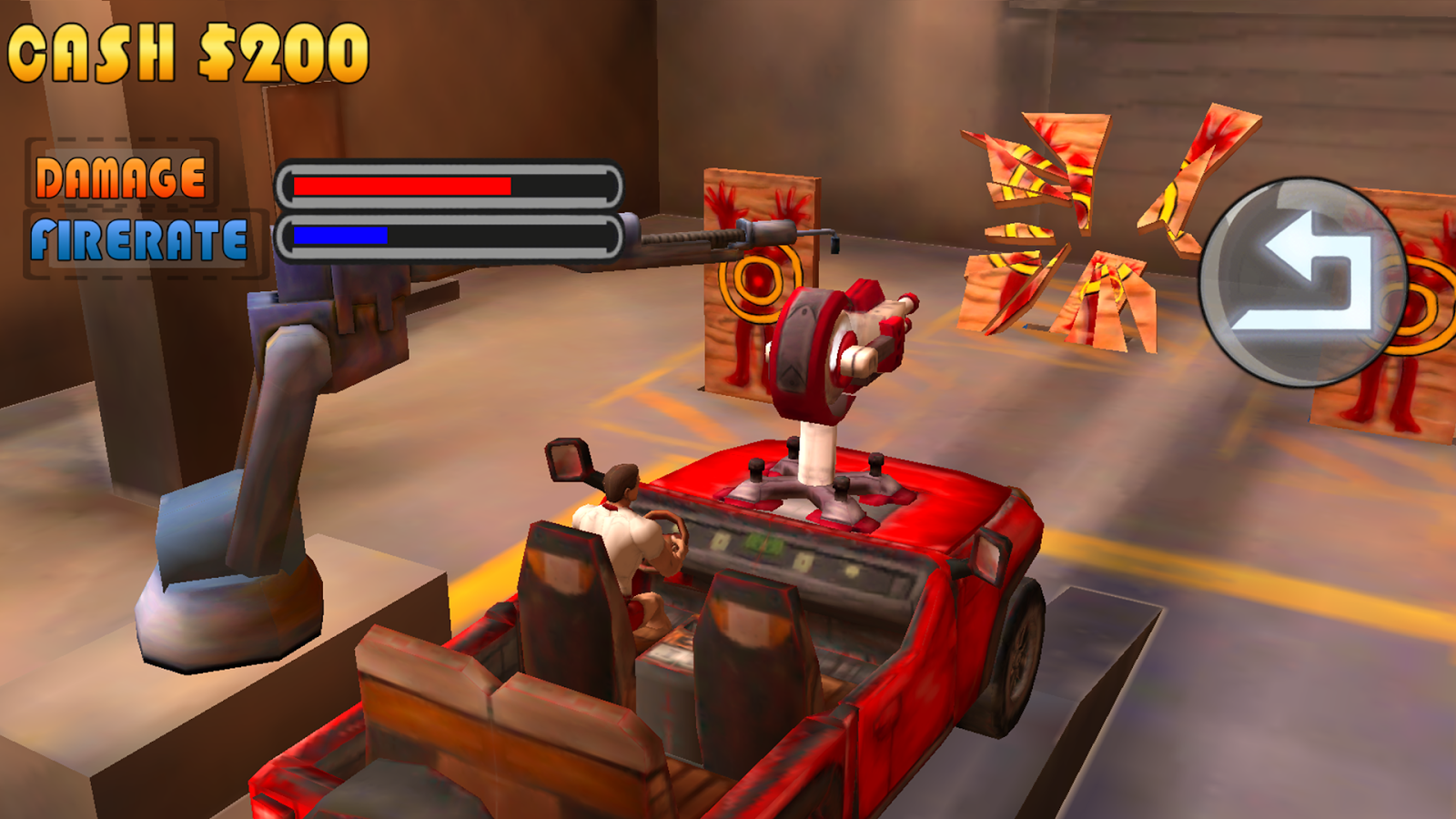 Three years in the making, the mobile game Deliverance by Paul Tschirgi ’15, visual arts, is now available for download on the App Store and Google Play.
Three years in the making, the mobile game Deliverance by Paul Tschirgi ’15, visual arts, is now available for download on the App Store and Google Play.
In this satirical game, players need to deliver fresh pizza to save the world from fake food, which requires excellent weaponry and driving skills to fend off world destruction. “The goal of this project was to bring a fully formed story into the mobile market and talk about the importance of fresh food vs. artificial food in a hilarious and action packed world,” says Tschirgi. In the three weeks since the game was published, the app has garnered positive reviews on both platforms.
Tschirgi invested savings from freelance work for Autodesk and selling 3D models on TurboSquid to fund the music, voice acting, and licensing necessary to make the game but he hopes to generate enough interest in Deliverance to gain outside financial support to work on another game. “I love working on games and my goal is to slowly hire on more team members to make more beautiful and fun games,” he says. “I have several more game ideas that I was able to make pieces of during my time in college on my website.”
Tschirgi developed his skills and a lot of the game during his final two years at UMBC, working closely with many faculty and students through classes and independent study. He notes that working with visual arts professor Eric Smallwood was critical in creating the animated cutscenes, cinematic sequences that are not part of the interactive gameplay controlled by the player and often are narrative interludes to introduce characters or new elements and set the mood.
“Smallwood helped me set milestones so that I was able to finish work on the cutscenes during that semester,” said Tschirgi, noting that the modeling, texturing, rigging, and animating of 3D characters as well as directing the voice acting and musical scoring of these scenes were completed during the independent study.
The hardest thing about making this game specifically was the incredible amount of time it takes to make 3D games combined with animated lip sync cutscenes and more than two hours of gameplay. Making a character in three dimensions takes about 10 hours. You start with a cube and then add more and more points until you can morph the cube into the shape of a human or whatever I need to make. Then I had to make it move in a convincing way, fire weapons and fit dialogue in—without making phones struggle to render it all. There are about 20 characters in the game, 25 roadway courses to drive on and all lots of exciting monsters and effects that I modeled and animated.
Additional collaborative study opportunities through the Linehan Scholars program and interactive media classes helped him refine his animation and programming skills. Tschirgi was also an active member of the Game Developer’s Club at UMBC, finding resources and encouragement to help him get through the thousands of hours he worked on the game. “Anyone who is curious about what game development is like or what it takes needs to visit the GDC on Wednesdays at noon during the free hour in Engineering 005A,” says Tschirgi.
I’ve done a lot of research on what are realistic goals and right now I’m working really hard to get at least 100 ratings/reviews on both the iOS and Android platforms. At that magic number I might be able to get high enough in the listings of games for people who have never heard of my game to stumble across it just by scrolling all the way down some of the app categories and then I could be reaching hundreds of thousands of people.
The next game project he would like to produce is Black Fowl. He estimates it will take about 6,000 hours to complete.
Images: Courtesy of Paul Tschirgi
Tags: Alumni, CAHSS, VisualArts

